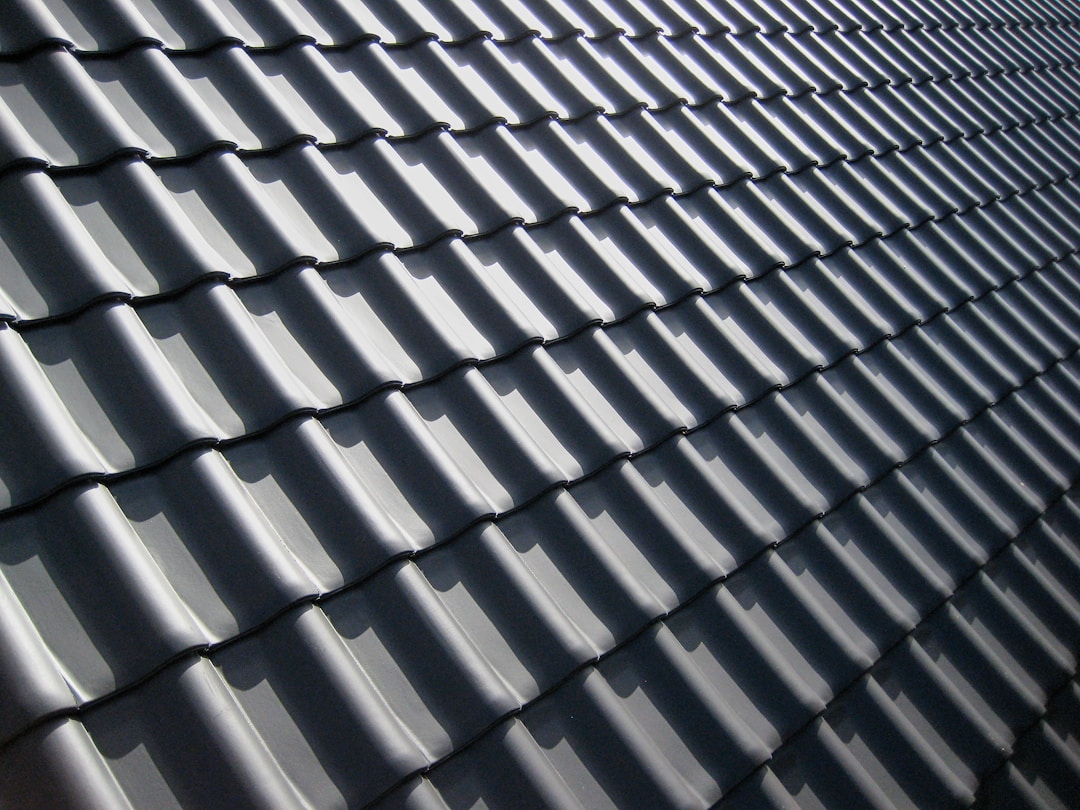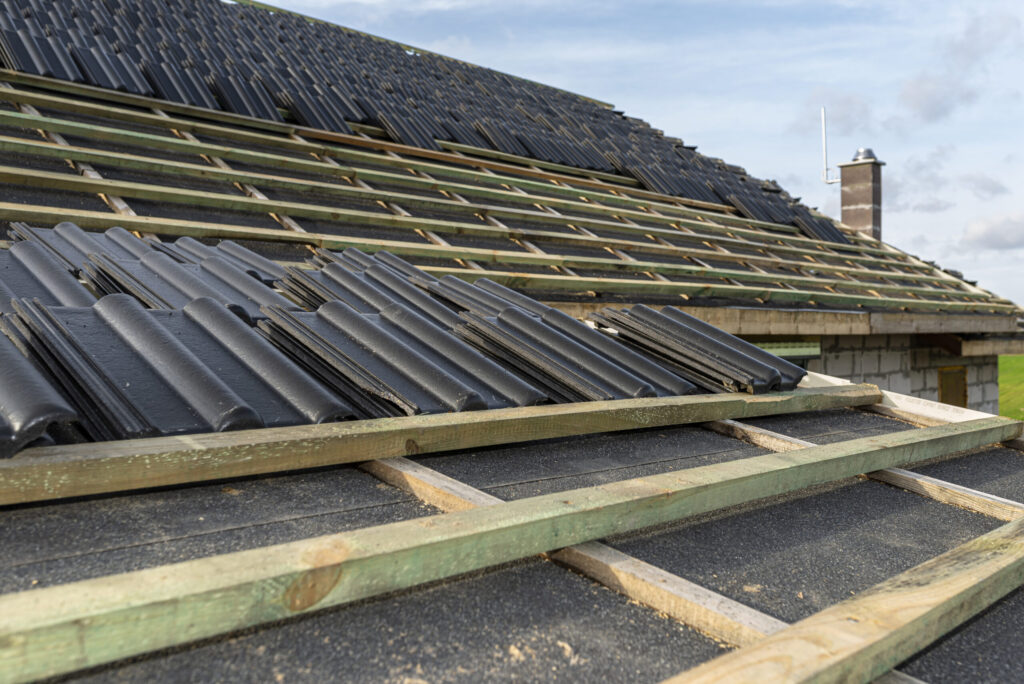Replacing a roof is a significant investment, but calculating the overall cost can be confusing and daunting for homeowners. Factors such as the roof’s size and pitch, materials, labor, permits, and regional differences can drastically affect the final expenses. Keep reading to learn about the most important aspects to consider when estimating the cost of a roof replacement.
Assessing Roof Size and Pitch

One of the primary aspects that determine the cost of replacing a roof is the roof’s size and pitch. The total square footage of your roof plays a crucial role in calculating the cost, as the roofing materials and labor are often priced per square foot. To determine the total square footage, start by measuring the length and width of each section of the roof and then multiply the numbers together. Add up the square footage of all sections to get the final number.
The pitch or slope of the roof also affects the project’s overall cost, as steeper roofs require more labor and safety precautions during installation. Roofs with a higher pitch will often have higher labor costs than flatter roofs. Additionally, steep roofs may necessitate specialized equipment or methods, further increasing costs.
Selecting Roofing Materials
Choosing the right material for your roof can have a significant impact on the overall cost. There is a wide variety of roofing materials available on the market, and each option comes with different price points, lifespans, and energy efficiency ratings. Some popular roofing materials include asphalt shingles, metal roofing, wood shakes, and tile roofing. When selecting the materials, you should consider factors such as durability, climate, aesthetics, and the material’s overall maintenance requirements.
Asphalt shingles are the most popular roofing material in the United States due to their affordability and ease of installation. Metal roofing is also becoming more popular for its durability and energy efficiency, while wood shakes and tile roofs are known for their unique aesthetics and long-lasting qualities. The roofing materials you choose play an essential role in determining the total cost of your roof replacement.
Once you have chosen your desired material, use the square footage of the roof to calculate the material costs. This calculation is essential when determining the total expenses for the project. It’s also a good idea to use a roof replacement costs calculator to get a more accurate estimate tailored to your specific needs and preferences for materials.
Understanding Labor Costs
Labor costs account for a significant portion of the overall expense of replacing a roof. Skilled and experienced labor is essential for completing a high-quality roof installation. The cost of labor can vary depending on your region, the complexity of the project, and the skill level of the contractors.
Generally, labor costs are calculated based on the number of work hours needed to complete the job and the hourly rate of the workers. It is essential to factor in any additional expenses, such as travel time, cleanup, and waste disposal, which can also impact the overall budget.
When estimating labor costs, remember to gather multiple quotes from various contractors to ensure you get the best possible price for your project. Make sure to verify the contractor’s experience, qualifications, and reputation before making a final decision. Instant Roofer is a great website to use if you’re looking to estimate the costs of a roofing project.
Obtaining Permits and Inspections

Roof replacement projects often require obtaining proper permits and inspections from local authorities. The cost of permits may vary depending on your location, the size of the project, and the local building codes. Be sure to research and include these costs in your overall budget, as they are a necessary expense for legal compliance.
Inspections are typically required before, during, and after the project to ensure the work is in line with local building codes. Failing to obtain the proper permits and inspections can result in fines, delays, or even legal issues. Always prioritize legal compliance when calculating the cost of your project.
While obtaining permits and inspections may seem like an additional burden, they are essential for ensuring both the safety and longevity of your new roof. Investing in these steps now can save you money and trouble in the long run.
Factoring in Regional Differences
Different regions in the United States have varying costs for materials, labor, and permitting, which influence the overall cost of a roof replacement project. For example, areas with a higher cost of living, such as the Northeast and large metropolitan areas, may have higher average prices for materials and labor from roof installers, whereas more rural areas tend to have lower costs.
Weather patterns and climate can also affect the materials and techniques used for roof installation, which will impact the project’s total cost. For example, areas with high winds or heavy snowfall may require specific roof designs or specialized materials to withstand these conditions, raising expenses.
Accounting for regional differences is crucial when calculating the cost of replacing a roof. Be sure to research your local area’s specific requirements and average prices to create an accurate budget for your project.
Project Timeline and Contingencies
The timeline of a roof replacement project also plays an essential role in determining its overall cost. While some homeowners may opt for a quick turnaround, others might have more flexible deadlines. The faster the project needs to be completed, the tighter the work schedule, which may increase labor and materials costs. On the other hand, a more lenient timeline can lead to cost savings by allowing for bulk material purchases or discounted labor rates.
It’s also important to include a contingency budget for any unforeseen circumstances that may arise during the project. Roof replacements can uncover underlying problems such as structural issues, water damage, or mold infestations, which can be expensive to address. Having a contingency budget will help prepare you for such situations and prevent sudden financial strain or delays in the project.
While you should try to stick to a strict budget, preparing for contingencies and potential complications will also save you time, money, and stress in the long run. Make sure to factor in these potential challenges when estimating overall costs.
Financial Assistance and Rebates

Financing options, rebates, or tax credits may be available for homeowners looking to replace their roofs, especially if they choose energy-efficient materials. Many lenders offer home improvement loans specifically designed for roofing projects, which can help spread out the costs over time and make the project more manageable.
Furthermore, by choosing energy-efficient materials or installing solar panels as part of the roof replacement project, eligible homeowners may be able to take advantage of federal tax credits, local rebates, and other financial incentives. The savings provided by these incentives can offset some of the initial expenses, making the roof replacement project more affordable overall.
Research available financing options, rebates, and tax credits when calculating the cost of your roof replacement. By leveraging these financial assistance programs, you can make your project more economically viable while also potentially improving your home’s energy efficiency and environmental impact.
In conclusion, calculating the cost of replacing a roof requires an in-depth understanding of various factors such as size, pitch, materials, labor expenses, permits, regional differences, timeline, contingencies, and potential financial assistance. By carefully considering each factor and using tools like a roof replacement cost calculator, you can create an accurate budget that will help you successfully complete your project without breaking the bank. Ultimately, a well-planned and executed roof replacement project will safeguard your home for years to come and improve its overall value.




